Dr Rebecca Cliffe of Penwortham reveals all about working in the jungle in her book Sloths: Life in the Slow Lane
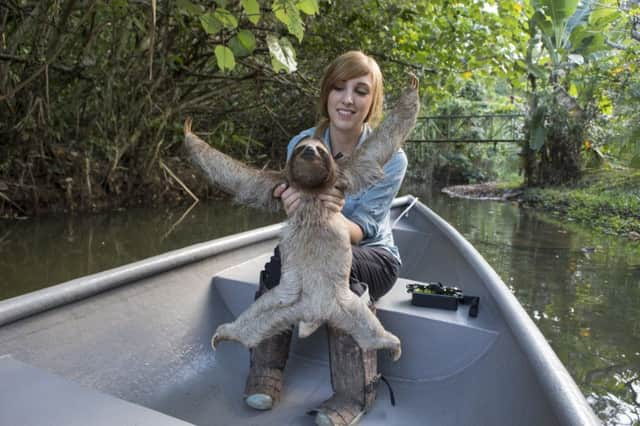

The 27-year-old, who grew up in Penwortham, has been living in Costa Rica for the last nine years, researching the habitat and welfare of sloths.
Her work was even featured on the Discovery Channel, as well as the BBC, National Geographic, Animal Planet, The Independent, and Scientific American.
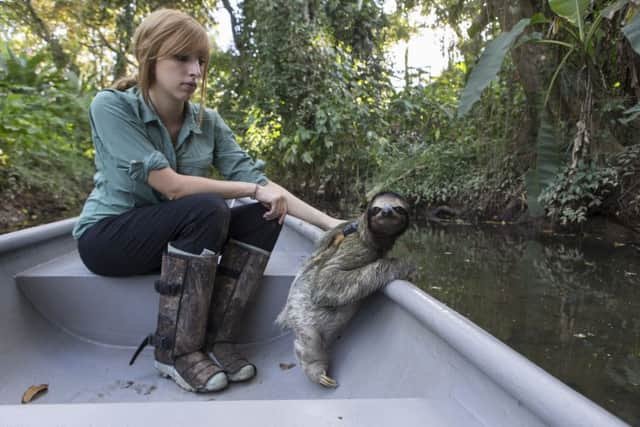

Advertisement
Hide AdAdvertisement
Hide AdRebecca spent months on end in the mosquito-ridden rainforests of Costa Rica with wildlife photographer, Suzi Eszter, where they slowly gained the trust of a female sloth with a newborn baby for her book - Sloths: Life in the Slow Lane.
They then ventured to the isolated and uninhabited island of Isla Escudo de Veraguas in Panama to document the swimming pygmy sloths. Here they endured jellyfish stings, being caught in a tropical storm at sea and a were stranded on a desert island.
Rebecca says: ”The pygmy sloths only live on a tiny, remote desert island off the coast of Panama, an eight-hour boat journey from the mainland.
“Just as we were about to make our journey home, a huge tropical storm rolled in and left us trapped on the island without any supplies, food or shelter.
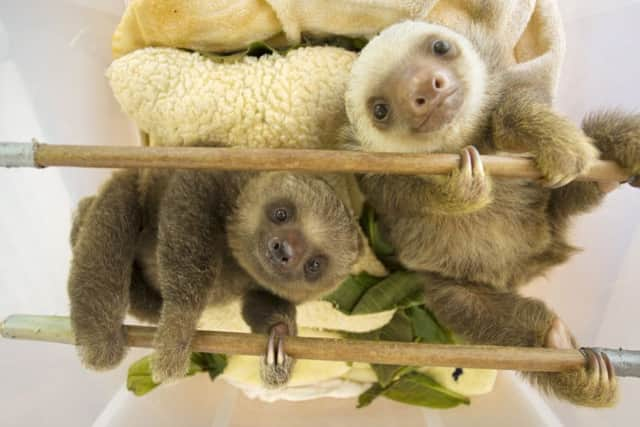

Advertisement
Hide AdAdvertisement
Hide Ad“We had to ration water, catch lobster and cook it on a fire, and sleep in an open speedboat in the ocean because it wasn’t safe for us to sleep on the beach, as there were deadly snakes and biting flies.
“We were on the island for three days. We eventually managed to travel back to the mainland in a little boat when the storm lifted and it was safe to make the crossing. It is a notoriously dangerous journey even when the sea is calm, so doing it in the wake of a tropical storm was probably one of the scariest things I have ever done.”
Sloths first piqued Rebecca’s interest whilst on a placement at a rescue centre in Costa Rica during her third year of reading zoology at Manchester University.
She says: “As part of my degree I had to go out on a placement as a biologist in my third year. I chose a rescue centre in Costa Rica and realised nobody really knows about them as not many people have bothered to study them, so I jumped at the chance to have a go and make a difference.
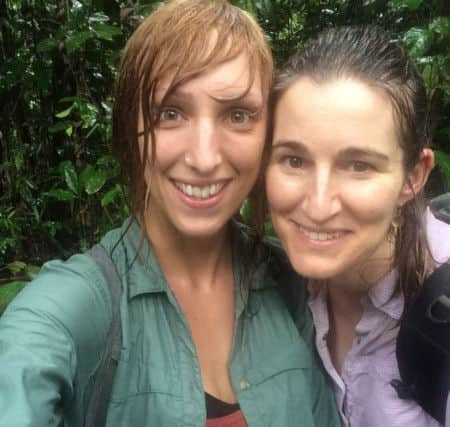

Advertisement
Hide AdAdvertisement
Hide Ad“I never stopped – I became a world expert in sloths. It all happened by accident really.”
While living in the Costa Rican rainforest, Rebecca has spearheaded the longest recorded study into wild sloth ecology for her PhD and has since expanded her work to encompass many different aspects of sloth biology, physiology, and conservation genetics.
She doesn’t get paid to do her research and so she funds it herself, via online Crowdfunding sources.
She explains: “I want to understand how sloths live and how they survive so I can protect them. A big part of my research has been the Sloths Backpack Project.
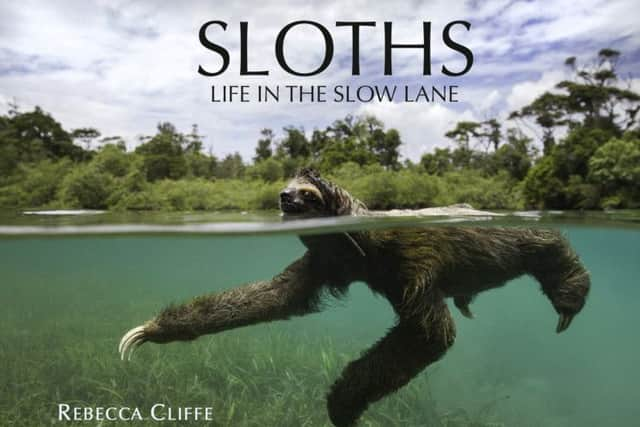

Advertisement
Hide AdAdvertisement
Hide Ad“I had hand sewn harnesses with tracking devices which looked like backpacks and I put them on the sloths to log their data and track their behaviour.
“I could see how they live and eat and where they go.
The former Penwortham Priory Academy pupil has lived in the Central American country of Costa Rica for the last nine years and loves it so much, she calls it her home.
She says: “Half of the place amazing, as you are in the middle of a jungle, which you can imagine is very beautiful, with all the trees, monkeys and wildlife, and then there are wonderful golden beaches by the blue sea.
“But then it is very primitive and basic. It is not unusual to have no running water or power and I am living off rice and beans, as meat is so expensive.
Advertisement
Hide AdAdvertisement
Hide Ad“You don’t get the luxury of having a Tesco supermarket out there, but there are a lot of farmers markets where you can get fresh fruit and vegetables.


“I am in the jungle on my own all day and there are a lot of mosquitoes, snakes and spiders to be aware of.
“Everything goes mouldy – my hair even went mouldy once as there are so many parasites.
“But I wouldn’t change it for the world. It isn’t bad when you have a beautiful beach 10 minutes from your doorstep.
Advertisement
Hide AdAdvertisement
Hide Ad“I am living in a nice little town with my boyfriend which is isolated from the rest of the country. I work in the middle of nowhere but everyone knows you.
“You can be riding a bike and everyone says hello to you.”
Whilst describing the jungle as a beautiful wonder, she admits she would never sleep there, as it is a dangerous.
She says: “The Discovery Channel tried to make me sleep over in the jungle during the filming of Meet the Sloths, but I said no. There are a lot of animals in there that can kill you, including pumas, jaguars and ocelots. I always make sure I get home at night as it is terrifying.”
Whilst Rebecca loves her Costa Rican life, it is her love of sloths that has kept her there.
Advertisement
Hide AdAdvertisement
Hide AdShe admits: “It’s all about the sloths. Knowing that I am in the position and opportunity to make a real difference to the animals.
“They are getting into trouble so quickly. They live for a long time, until at least 50 but they are very slow to reproduce as they have a baby every four years.
“They are dying out because of what humans are doing to them and so I am hoping to change that through serious conservation work.
“My big passion is education. I want to teach children about sloths.
Advertisement
Hide AdAdvertisement
Hide Ad“They are brought up to believe sloths are vermin and should be killed.
“They do horrible things to them, such as setting them on fire and kicking them around like a football.
“Other people want to hug them because they are furry and look so cute but really sloths don’t want to be petted. They just want to be left alone.
“If people try to pet them or take selfies, it causes a lot of stress. They may look like the perfect teddy bear, but they are wild animals.”
Advertisement
Hide AdAdvertisement
Hide AdOn a mission to educate people about sloths, Rebecca hopes her book will help save their plight, especially as proceeds will go towards supporting the Sloth Conservation Foundation.
She adds: “There is a lot of bad and misleading information about sloths.
Half the things on the internet are untrue, for example the fact that they are deaf and blind, they can stay under water for 40 minutes without breathing and if you chop their heads off it takes 15 minutes for them to die. All of this is wrong.
“We are taken beyond the ‘lazy’ stereotype to reveal the surprisingly tactful and delicate implications of life in the slow lane.
Advertisement
Hide AdAdvertisement
Hide Ad“Named after one of the seven deadly sins and first described as “the lowest form of existence”, sloths have been stereotyped as nature’s couch potatoes for centuries.
“However, contrary to popular belief, there is nothing lazy about the sloth. Slowness is, in fact, an incredibly successful survival strategy.
“The book explains how the sloths’ slow pace has facilitated their survival for more than 60 million years, yet is now also their downfall as they can’t keep up with the rapidly changing modern word. Among the reasons for the declining numbers of sloths are power line electrocutions, dog attacks, road collisions, genetic isolation and human cruelty.
“The future for sloths is uncertain and it is in our hands as humans to ensure they survive.”